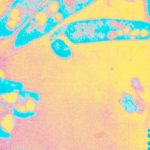Lien vers Pubmed [PMID] – 25139600
J Wound Care 2014 Aug;23(8):417-8, 422-4
OBJECTIVE: Mycobacterium ulcerans is the causative agent of Buruli ulcer disease, the third most common mycobacteriosis after tuberculosis and leprosy and an emerging public health threat in sub-Saharan Africa. The bacteria produce a diffusible cytotoxin called mycolactone, which triggers the formation of necrotic lesions in cutaneous and subcutaneous tissues. The principal aim of this study was to characterise the cell surface hydrophobicity of Mycobacterium ulcerans and determine if bacteria bind to dialkyl carbamoyl chloride (DACC)-coated dressings through hydrophobic interactions in vitro. Since mycolactone displays hydrophobic groups, a secondary aim was to compare mycolactone binding to hydrophobic and standard dressings.
METHODS: We used hydrophobic interaction chromatography to evaluate the cell surface hydrophobicity of Mycobacterium ulcerans, compared to that of other microorganisms colonising wounds. The binding of Mycobacterium ulcerans bacteria to DACC-coated and control dressings was then assessed quantitatively by measurement of microbial adenosine triphosphate (ATP), while that of mycolactone was evaluated by fluorescence spectroscopy.
RESULTS: Compared to Escherichia coli, Staphylococcus aureus and Pseudomonas aeruginosa, Mycobacterium ulcerans displayed the highest cell surface hydrophobicity, irrespective of the bacterial production of mycolactone. Mycobacterium ulcerans bacteria bound to DACC-coated dressings [corrected] better than untreated controls. Mycolactone did not bind stably to hydrophobic, nor standard dressings, in the conditions tested.
CONCLUSION: Retention of Mycobacterium ulcerans and other wound pathogens to DACC-coated dressings may help reduce the bacterial load in Buruli ulcers and thereby improve healing. Dressings efficiently capturing mycolactone may bring an additional clinical benefit, by accelerating the elimination of the toxin during the course of antibiotic treatment.

